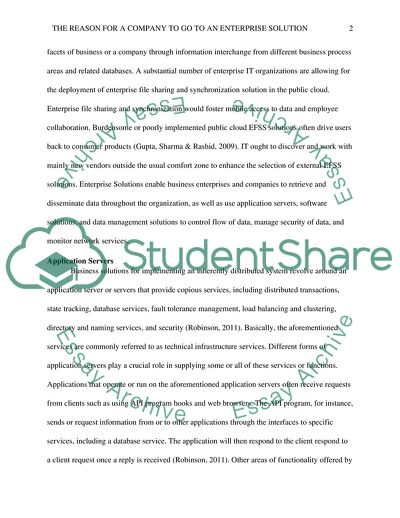Cite this document
(The Reason for a Company to go to an Enterprise Solution Research Paper Example | Topics and Well Written Essays - 2750 words - 1, n.d.)
The Reason for a Company to go to an Enterprise Solution Research Paper Example | Topics and Well Written Essays - 2750 words - 1. https://studentshare.org/information-technology/1854446-research-paper
The Reason for a Company to go to an Enterprise Solution Research Paper Example | Topics and Well Written Essays - 2750 words - 1. https://studentshare.org/information-technology/1854446-research-paper
(The Reason for a Company to Go to an Enterprise Solution Research Paper Example | Topics and Well Written Essays - 2750 Words - 1)
The Reason for a Company to Go to an Enterprise Solution Research Paper Example | Topics and Well Written Essays - 2750 Words - 1. https://studentshare.org/information-technology/1854446-research-paper.
The Reason for a Company to Go to an Enterprise Solution Research Paper Example | Topics and Well Written Essays - 2750 Words - 1. https://studentshare.org/information-technology/1854446-research-paper.
“The Reason for a Company to Go to an Enterprise Solution Research Paper Example | Topics and Well Written Essays - 2750 Words - 1”. https://studentshare.org/information-technology/1854446-research-paper.


